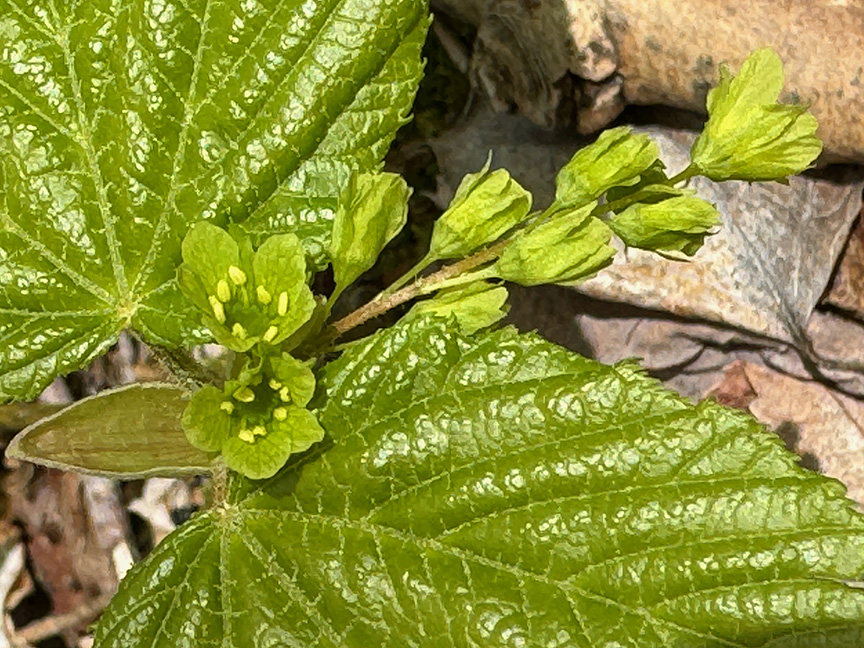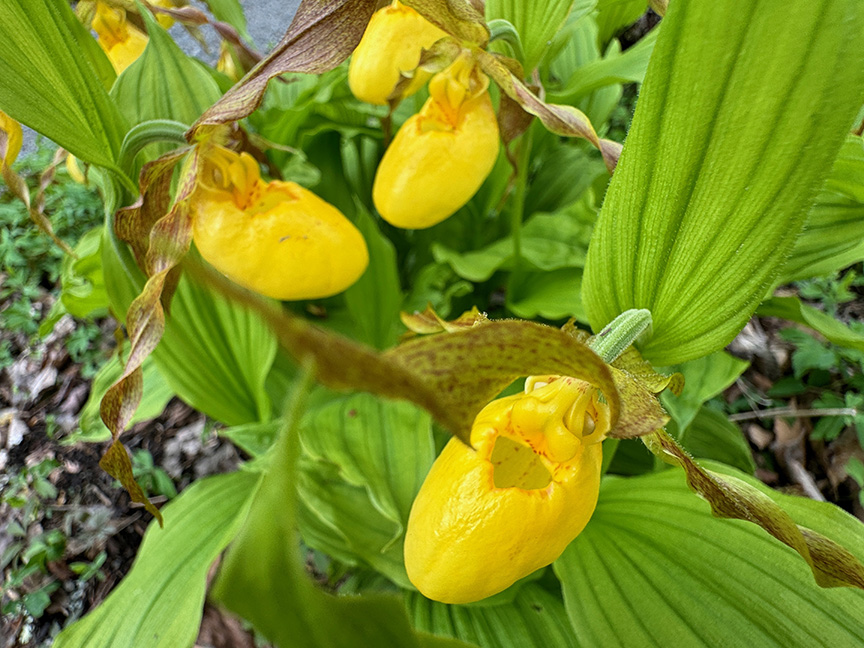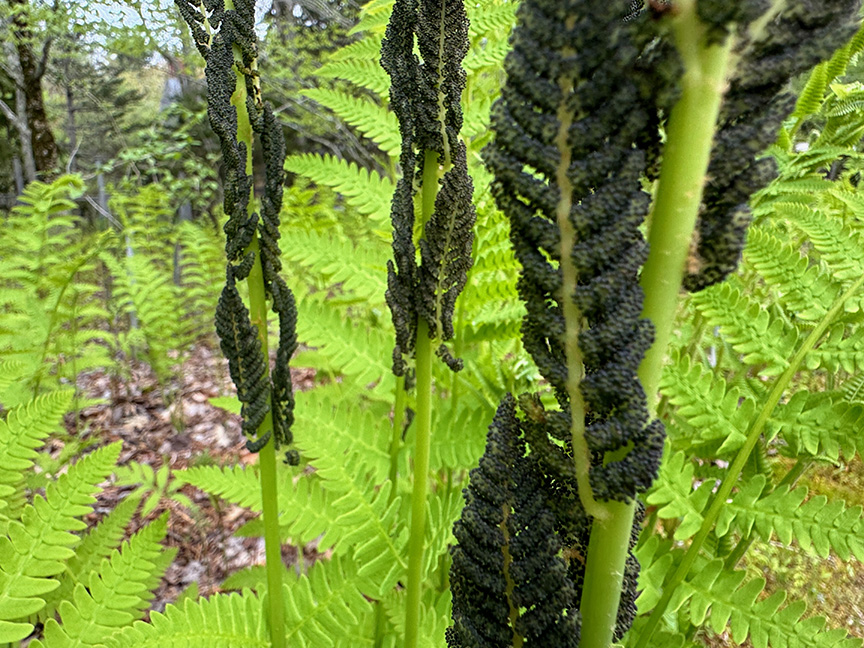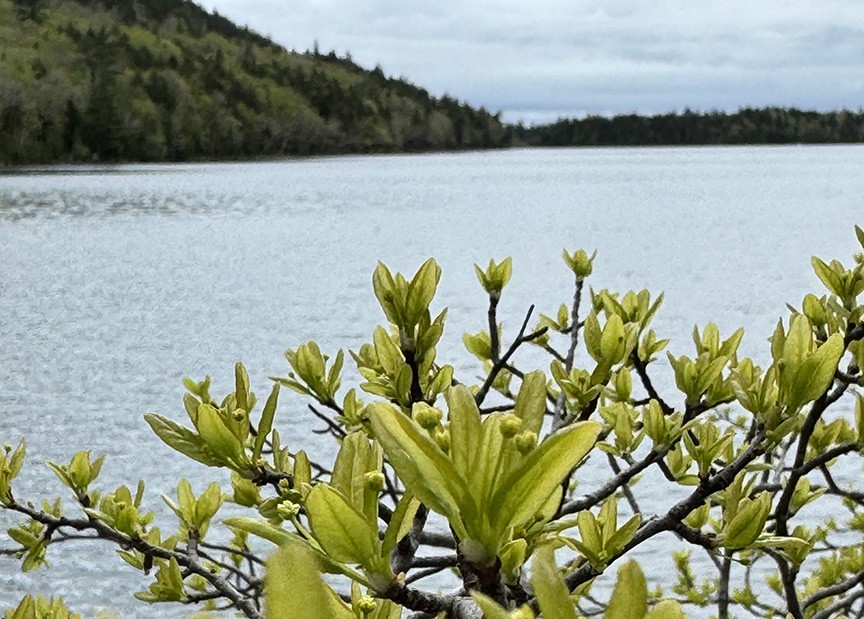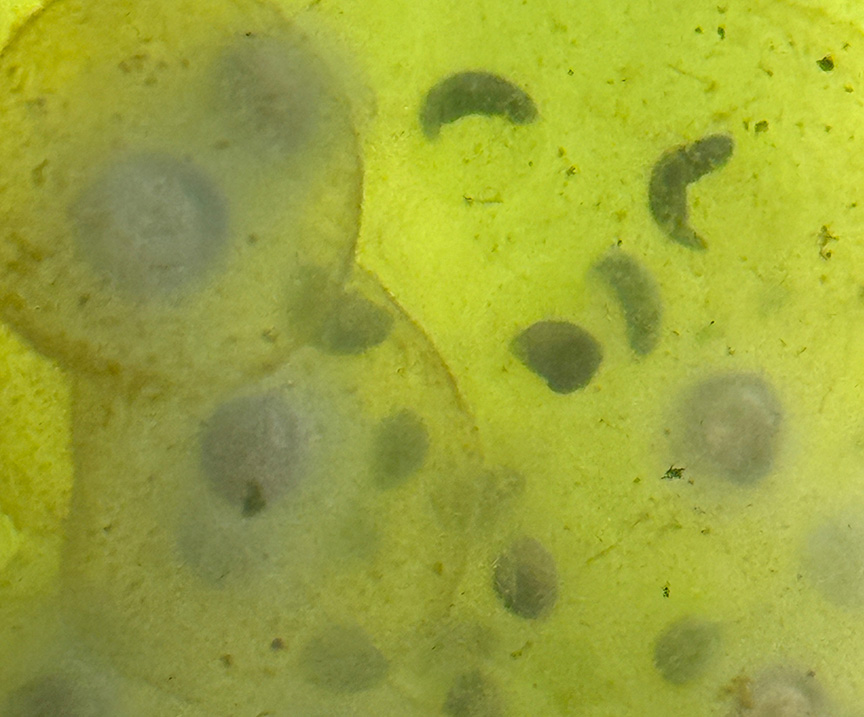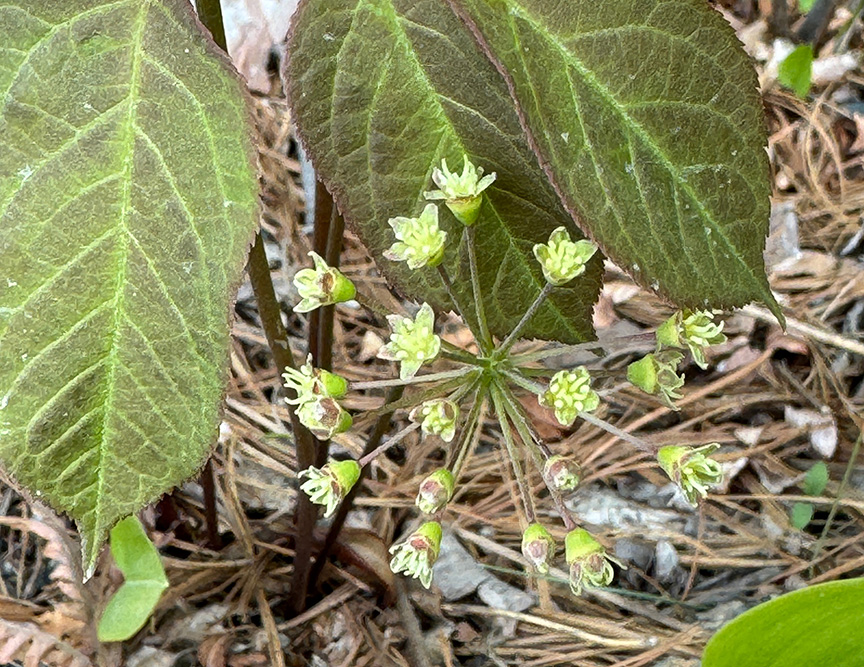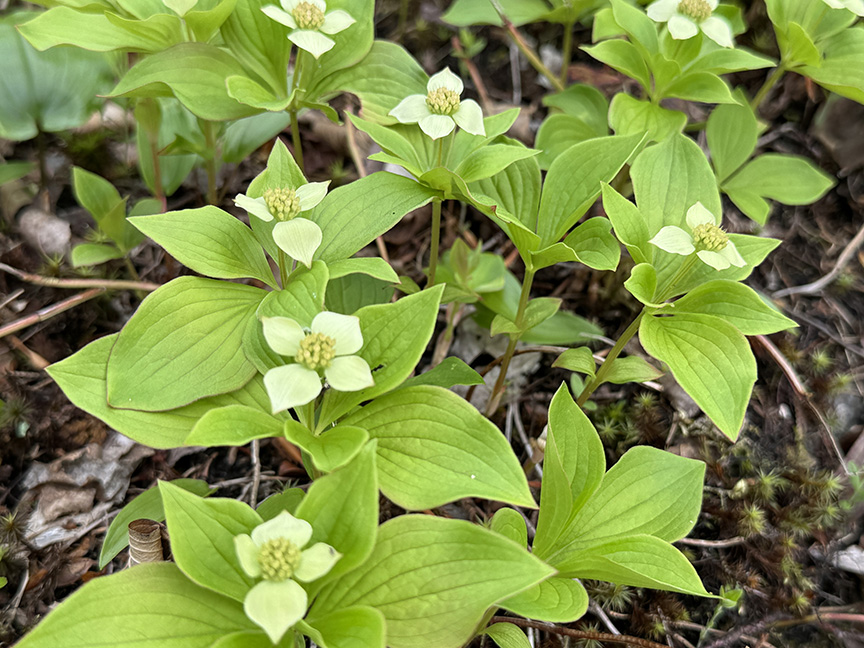Colors that vibrate are frowned upon in the graphics world, and when I was a graphic designer it was suggested more than once that I tone it down.
Today I hiked along South Bubble, in Acadia National Park, and the colors were screaming. An entire shimmering spectrum from lemon-yellow to lime-green lined the trail, citrus colors in a state where the only citrus are in glasshouses or grocery stores. I passed a few fellow trail-hikers and we marveled at the brilliancy of the leaves, but not one suggested toning it down. My clients would have cringed.
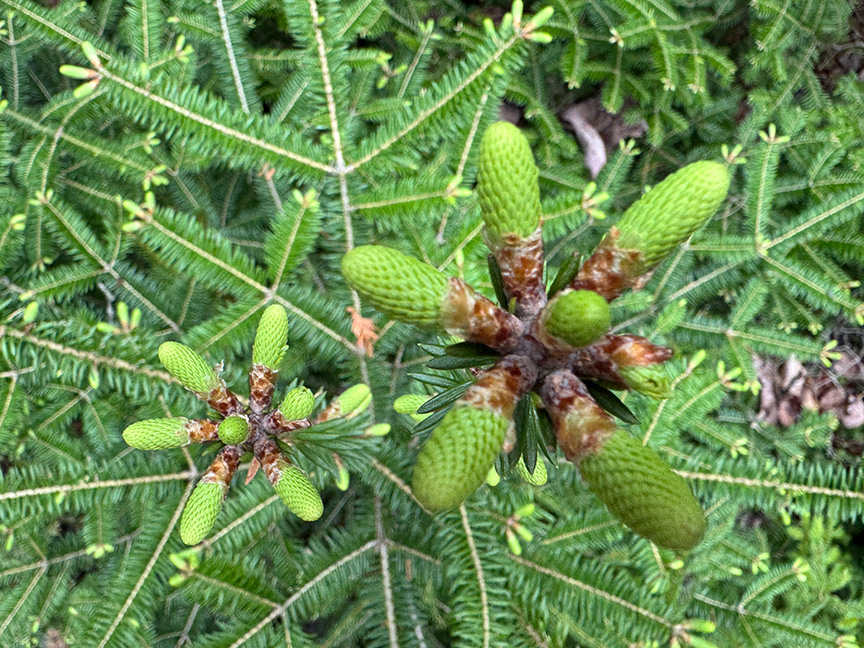
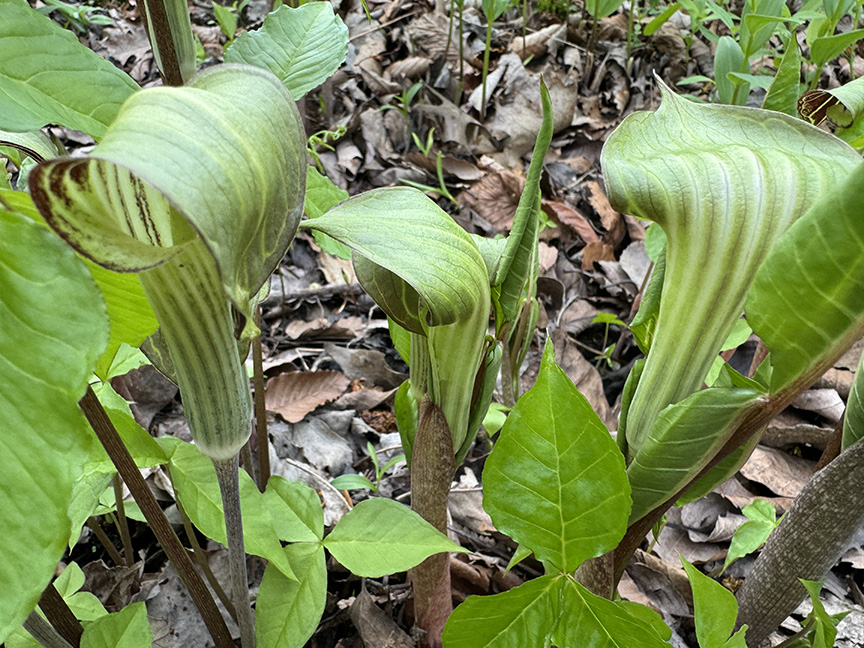
Spring comes to Maine in many ways, and it does not happen all at once. There is ice-out, when with seeming reluctance—or is it bounding excitement?—the first chunks of frozen water depart downstream and melt away. Sap runs, emerging black bears are captured on game cams, and then in a blur flowers bloom, insects feed, and ants wake up and pat aphids who have just emerged from their winter eggs. A deep time of decompression and careful observation becomes frenzied and chaotic.
The world is waking up, ferns are unfurling fronds, salamanders bump shoulders in vernal pools, and bumblebees cruise looking for a place to lay eggs. A soothing gray and black rocky hillside now vibrates with contrasting chartreuse spring leaves.
Call it Spring Fever if you wish. The days are longer and warmer, and every day a bird returns or a flower opens. Flowers get pollinated, mammals mate. I share sweet-scented mayflowers with a friend, dip for fairy shrimp in the pond, and watch a wasp emerge from a rose gall. These are my rites of spring. It is a radical change from the slower pace of winter.
My winter habits include painting and reading. Sometime in May, I remember to listen to Igor Stravinsky’s Rite of Spring, a version by Hubert Laws. It grabs me, and any listener, then shakes us up like dice in a cup and tosses us out to wobble our heads in a daze, and go climb a mountain to find chartreuse.
I rock hop along the steep trail at South Bubble that descends to Jordan Pond. The greens intensify. My loupe is around my neck, and I peer at tiny flowers perhaps 1/32 of an inch across, hidden in a circle of grassy green leaves. Beech trees have soft tender leaves, hanging down to the earth as they emerge. Now is the time they taste best, a bit lemony, like their spring color. The discrete flowers of Aralia nudicaulis, wild sarsaparilla, are a perfect sphere hidden under lime-veined leaves. Half-inch long and exquisite, the newly formed leaves of gray birch, Betula populifolia, are sharply serrated, and still wrinkled and crumbled before they unfold.
Everywhere I look, vivid colors are shouting. The leading growth of a balsam fir, Abies balsamea, is a bright star, each radiating tip revealing the perfect symmetry of a spiraling Fibonacci sequence. The male flowers of a striped maple, Acer pensylvnicum, have intense green petals, a darker green center, and yellow pollen-tipped anthers. It was just last year that I finally took a close look, and learned to know the male flowers from the female, both with shades in the chartreuse palette. Acid green and yellow shines on the three-lobed leaves of Bazzania trilobata, a liverwort ubiquitous on the forest floor. Swathes of Canada mayflower, Maianthemum canadense, crowd in patches along roadside edges, and where sun reaches the forest floor. Single-leafed plants are immature, and so have no flower. Plants with two or three leaves are fertile, and their young flowers still have a green hue. Challenge someone to find a one-leafed plant with a flower and they will be busy for some time. All these spring wonders are here, beneath our feet and over our heads, but unless we look we may pass them by without hearing their call.
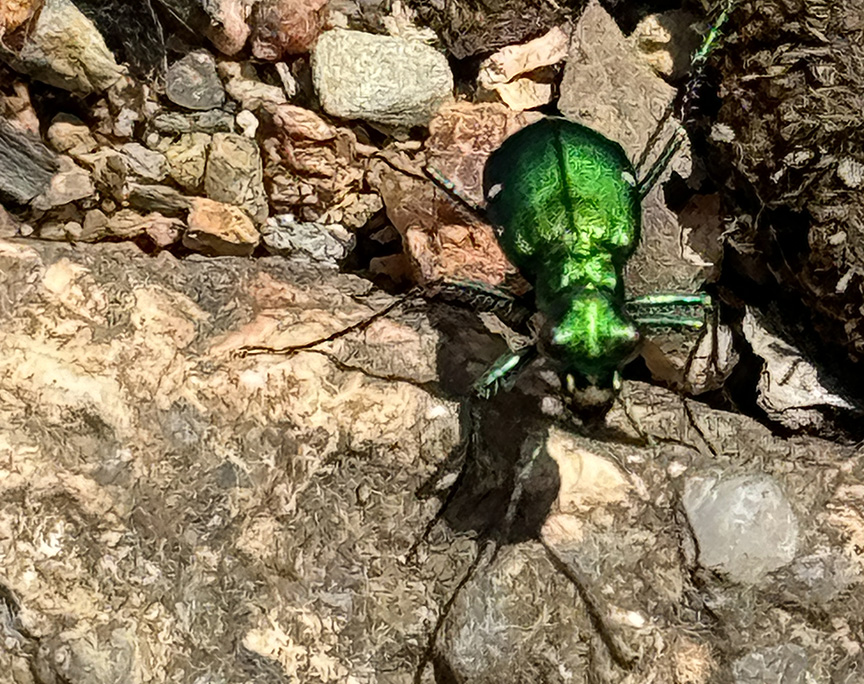
Are there actually fifty shades? I suspect there are far more, the slide from yellow to green is infinite. I love to count and measure, but this is not the time, there is too much to see before the colors deepen and mature. I think about a friend I had lunch with yesterday. Her daughter was blind, and my friend taught her to see colors with temperature. A warm breath on her daughter’s leg was yellow, radiant heat from a heat lamp was orange. Ice stroked along an arm was blue. How did she communicate chartreuse? I do not know, but I think it may have been with quick taps, and a vibration of fingers.
That is chartreuse, it vibrates. It is the color of spring.
